The Family Tree DNA ethnicity report has been updated, and this means more details about ethnic and geographic origins for both autosomal and mtDNA DNA testers.
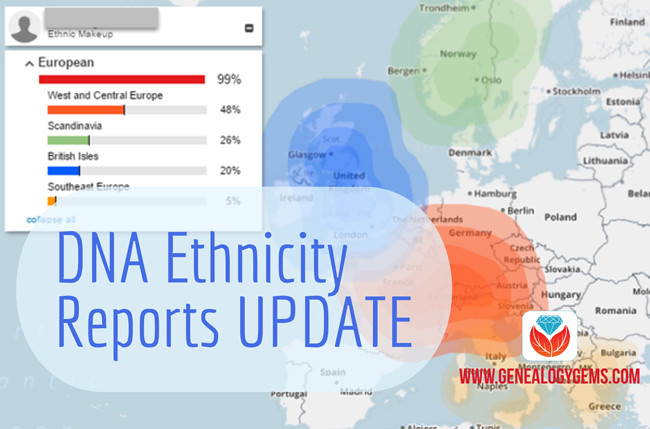
Family Tree DNA recently announced a round of updates to myOrigins, its mapping tool for ethnic and geographic ancestry. New are more detailed breakdowns of their population clusters and in-depth descriptions of them. (Visit Family Tree DNA’s website here.)
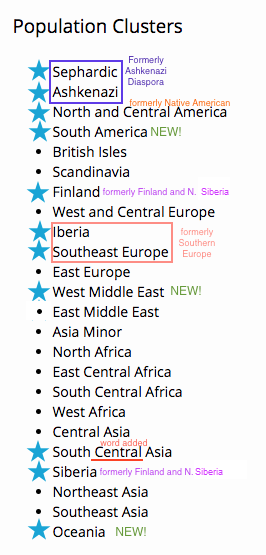
It is so exciting to see new or updated reports from our genetic genealogy testing companies! It is a good reminder of two things: First, that the results we currently have, especially in the arena of our ethnicity results, will continually be improving. Second, that once you test with any company, these improvements are added to your account and your results are updated automatically.
Family Tree DNA is the only company offering a complete look at your mitochondrial DNA (mtDNA), the one that traces your direct maternal line. They recently updated the deep ancestral assignments for these mtDNA tests. The updates were based on scientific advances in the world of mtDNA and can sometimes give you a more specific idea of where your ancestral line came from.
In addition to the mtDNA updates, FTDNA has also updated their MyOrigins results as part of your autosomal DNA test. Previously your MyOrigins results broke up the world into 18 different pieces and you were told your affiliation with each. Now with 6 new populations added, there are a total of 24. The changes include splitting three categories into smaller parts, like they are now reporting Finland separate from Siberia, as well as adding three new categories in South America, West Middle East, and Oceania.
Your MyOrigins results will now also include trace amounts, which are those percentages that are very low and therefore do not carry a high confidence. But many genetic genealogists wanted to see any area that may have been detected, and so FTDNA responded.
How to Review Your Family Tree DNA Ethnicity Report
1. Log in to your Family Tree DNA account. From your dashboard, select myOrigins.
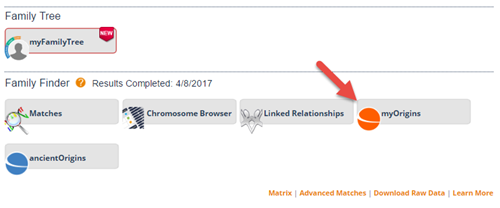
2. On the myOrigins page, click View all to see your full ethnic percentages, as defined by Family Tree DNA. You can also click View myOrigins map to see your results mapped out. (The map looks like the one at the beginning of this post.)
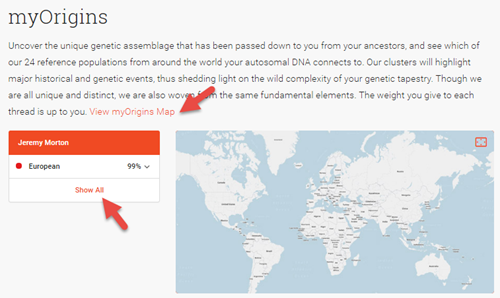
3. When you click to view all your ethnicity results, you’ll see a more detailed breakdown of your population groups. Click View all population descriptions to read more about each one.
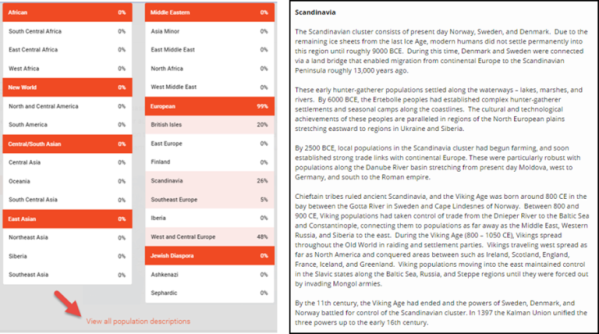
The Impact of Updated Family Tree DNA Ethnicity Reports
On the whole, are these updated results going to significantly impact your family history research if you have tested at Family Tree DNA? Likely not. The greater impact is just in the idea that these things can be improved, updated, and changed, which means our experience will continue to improve, and more people are likely to test. More people in the database means more possible cousins. More possible cousins means more genealogy breakthroughs, and a more complete picture of our heritage, and that is what we are really all after.
Learn More About DNA Testing for Genealogy
Click here to see individual guides for topics I talked about above, such as testing at Family Tree DNA, testing your autosomal or mitochondrial DNA and getting started (in which I explain ethnicity results). Or click here for the ultimate Genetic Genealogy Jumbo Pack: ALL 10 of my guides PLUS my video class, “Getting Started with Genetic Genealogy.”

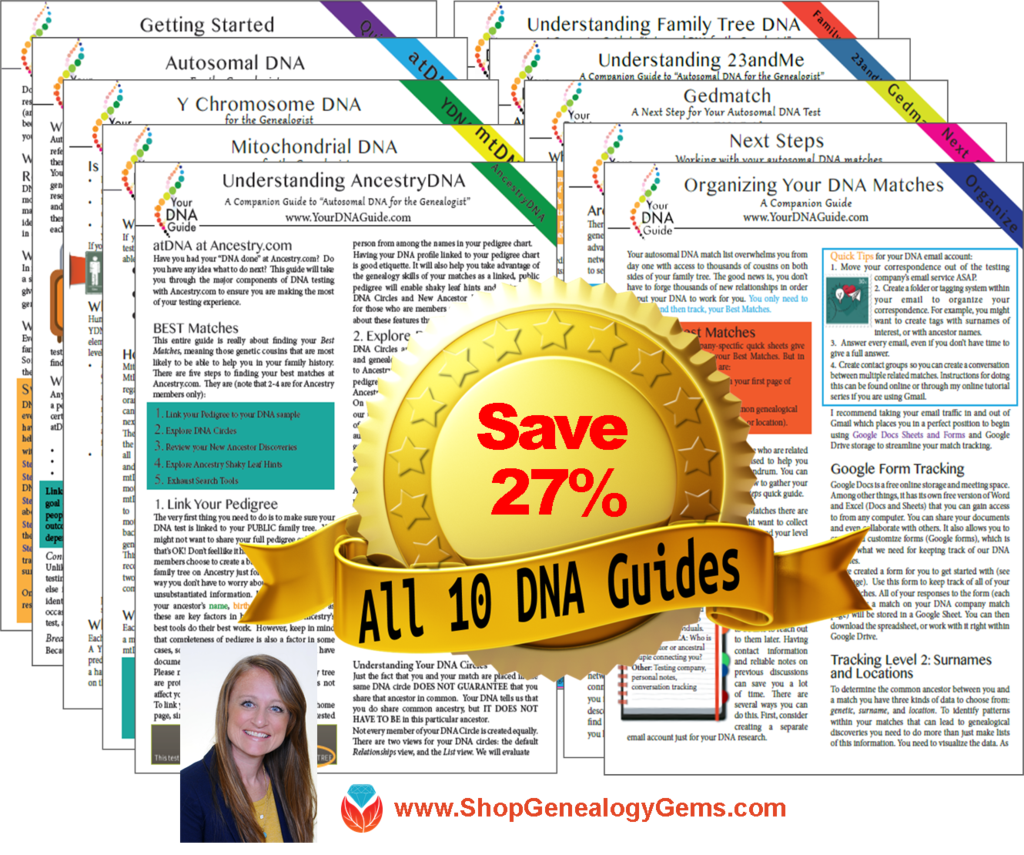




Hi,
Thanks for this report. My Ethnicity hasn’t changed all that much but I do wonder how my husband could have gone from a whopping 42% Scandinavian ( the rest made up of some Middle East and Mostly Britain) to zero percent Scandinavian, zero Middle Eastern when he had around 8% before to ALL Britain now? I can trace Danish ancestors of his 200 years ago.. This change in algorithm has made the new ethnicity update seem very disreputable. On Ancestry and My Heritage he had about half the % of the original FTDNA..Can you explain this?
Hi Linda,
You aren’t the first one to reveal such sweeping changes from FTDNA after the new update. I wish I did have a good explanation for you, but I haven’t found any satisfactory answers myself. The best advice is to recognize that these ethnicity estimates are just that, estimates, and are really only meant to inform us about our heritage thousands of years ago. But still, you should be able to expect more consistency.
The new MyOrigins Map is really not very useful for European distinctions, just a glittering generality. The old map was much better. I have a kit from FTDNA from 2007 and that tree was very accurate. The paper trail followed the patterns exactly. I have 2 new kits I monitor and the MyOrigins trees are not just useless but inaccurate. It doesn’t even match with the FTDNA autosomal matches at all which should also correlate to the yDNA results. But no luck there either – No Scandinavia, No Switzerland and No Germany show on the map at all. Their excuse when I called was, “those cultures are so interrelated that they can’t be differentiated.” OHH Ugh FTDNA should let us have access to both the old map and the new map. I’m sure the new map is beneficial form some families but why take away the old maps. I’ve been doing genealogy research for more than 40 years with paper trail heading back to the 1400’s. FTDNA needs to allow us access to the old and the new ethnicity maps.
I manage both my own account and two others at FTDNA. The new ethnicity estimates are totally out of whack for all three of us. I have well-sourced genealogical data going back to the 1600s for all three, and none of them track properly. My mTDNA results (first ever) are useless as the matches provide no trees or names, and there are no locations.